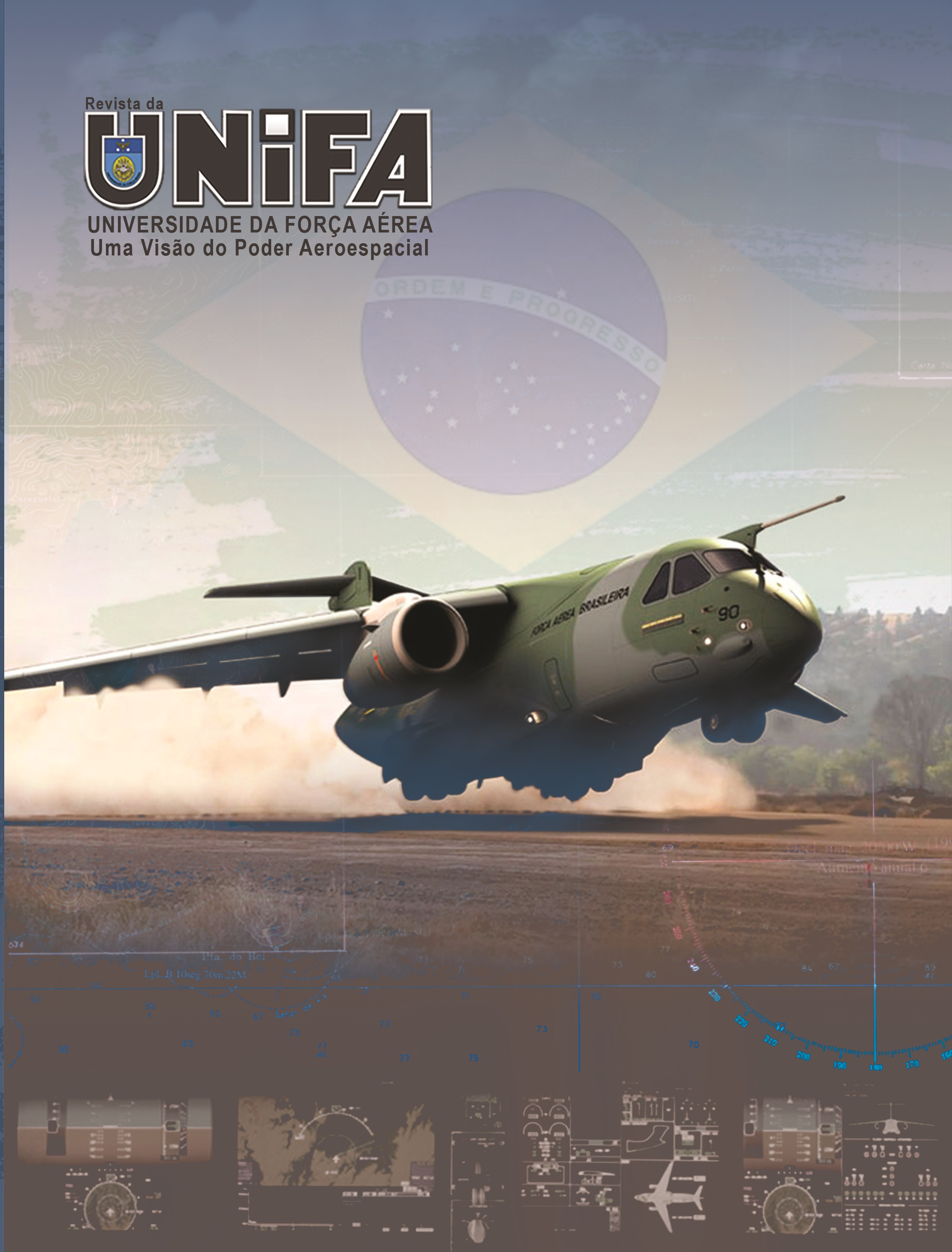African Airpower:
a concept
DOI:
https://doi.org/10.22480/revunifa.2020.33.262Keywords:
Strategy, Airpower, CooperationAbstract
The development of an African Airpower Concept starts by identifying the current operating environment and limitations. After these realities are identified, we lay out airpower requirements and cooperative strategies needed to address the current threats. The concept outlines broad strategic principles common across Africa that could be incorporated into tailored regional strategies. This concept draws on work done over the past decade by the US Air Force and especially US Africa Command, its air component (African Air Forces) and Air University in partnering with African air forces to develop capacity, capabilities and cooperation. Several African air forces and regional organizations have taken a number of initiatives during the 2010s that reflect some of the Concept’s recommendations.
References
BURGESS, S. F. Air War College Air Force Symposium 2009: AFRICOM, 31 March-2 April 2009, Final Report, May 28, 2009.
BURGESS, S. F. Report on the 2013 African Airman Alumni Symposium, Maxwell AFB, Ala., Air University, June 17, 2013.
CHIVVIS, C. S. The French War on Al Qa'ida in Africa. Cambridge: Cambridge University Press, 2016.
DIOP, B., PEYTON, D., MCCONVILLE, G. Building Africa’s Airlift Capacity: a strategy for enhancing military effectiveness. In: Africa Security Brief: A Publication of the Africa Center for Strategic Studies. Washington, DC, n. 22, 2012. Disponível em: https://africacenter.org/wp-content/uploads/2016/06/ASB22EN-Building-Africa%E2%80%99s-Airlift-Capacity-A-Strategy-for-Enhancing-Military-Effectiveness.pdf. Acessado em: 03 mar 2020.
DULANEY, W. Organizational Communication and African Air Forces: Building Partnerships and Capacities.Maxwell AFB, Ala., US Air Force Culture and Language Center, October 2013.
KRULICK, J. N. Airlift in Africa: Building Operational Logistics Capability for the African Standby Force. Army Sustainment,2013. Disponível em: https://alu.army.mil/alog/PDF/JanFeb2013/Airlift_Africa.pdf. Acessado em: 01 fev 2020.
KWIATKOWSKI, K. Expeditionary Air Operations in Africa. Alabama: Air University Press, 2001. Disponível em: https://media.defense.gov/2017/May/05/2001742924/-1/-1/0/FP_0005_KWIATOWSKI_EXPEDITONARY_OPERATIONS_AFRICA.PDF. Acessado em: 12 dez 2019.
MCCAUGHAN, R. Air Mobility Challenges in Sub-Saharan Africa. ASPJ – Africa & Francophonie: air and space power journal. Alabama, v. 8, n. 2, 2017. Disponível em: https://media.defense.gov/2019/Feb/26/2002093296/-1/-1/0/JEMEAA_01_1_MCCAUGHAN.PDF. Acessado em: 30 nov 2019.
PELTIER, J. P. Air domain development in Africa; a reasonable Proposition. Air and Space Power Journal. Alabama, v. 23,n. 2, 2009. Disponível em: https://www.airuniversity.af.edu/Portals/10/ASPJ/journals/Volume-23_Issue-1-4/2009_Vol23_No2.pdf. Acessado em: 15 out 2019.
SCHLUMBERGER, C. Open Skies for Africa: implementing the Yamoussoukro Decision. Washington, DC: The World Bank, 2010. . Disponível em: https://openknowledge.worldbank.org/bitstream/handle/10986/2467/552000PUB0Yamo10Box349442B01PUBLIC1.pdf?sequence=1&isAllowed=y. 03 dez 2019.
SMITH. M. Boko Haram: inside Nigeria’s Unholy War. London: Bloomsbury Publishing, 2015.
SHAW, M., REITANO, T. Organized crime and criminal networks in Africa, Oxford Research Encyclopedias. Oxford: Oxford University Press, 2019.
SPAVEN, P. A US Air Force Strategy for Africa. Alabama: Air University Press, 2009. Disponível em: https://media.defense.gov/2017/Nov/21/2001847280/-1/-1/0/DP_0007_SPAVEN_USAF_STRATEGY_AFRICA.PDF. Acessado em: 30 nov 2018.
WALL, R., SWEETMAN, B. Out of Africa. Aviation Week & Space Technology. Washington, DC. v. 173, n.35, 2011.
WILLIAMS, P. Fighting for peace in Somalia. Oxford: Oxford University Press, 2019.
Downloads
Published
Issue
Section
License
Copyright (c) 2020 Revista da UNIFARevista da UNIFA permite que o (s) autor (es) mantenha(m) seus direitos autorais sem restrições. Atribuição-NãoComercial 4.0 Internacional (CC BY-NC 4.0) - Revista da UNIFA é regida pela licença CC-BY-NC









